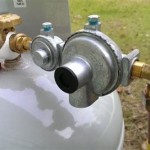Freestanding Outdoor Stone Fireplaces: A Comprehensive Guide
Freestanding outdoor stone fireplaces represent a significant investment in enhancing outdoor living spaces. They offer a combination of aesthetic appeal, functional heating, and social gathering point that few other outdoor features can match. Understanding the various aspects of these fireplaces, from their construction and materials to their benefits and maintenance, is crucial for making an informed decision about incorporating one into a landscape design.
The allure of outdoor fireplaces stems from their ability to extend the usability of patios, decks, and yards beyond the typical warm-weather seasons. The warmth and ambiance created by a crackling fire can transform a cool evening into a cozy and inviting experience. Moreover, the visual impact of a well-designed stone fireplace adds a touch of elegance and sophistication to any outdoor setting.
This article aims to provide a detailed overview of freestanding outdoor stone fireplaces, covering key considerations for design, construction, maintenance, and safety. It serves as a resource for homeowners, landscape architects, and contractors involved in the planning and installation of these outdoor features.
Design Considerations for Outdoor Stone Fireplaces
The design phase is paramount to the success of any outdoor stone fireplace project. Careful consideration must be given to several factors, including the overall aesthetic, the functional requirements, and the integration of the fireplace with the surrounding landscape. A well-designed fireplace complements the existing architectural style of the home and enhances the overall outdoor living experience.
Style and Aesthetics:
Stone fireplaces can be designed in a variety of styles, ranging from rustic and naturalistic to modern and contemporary. The choice of style should be guided by the existing architectural style of the home and the desired ambiance of the outdoor space. For a traditional look, natural stone such as fieldstone or river rock might be preferred. For a more contemporary aesthetic, smooth-cut limestone or manufactured stone veneers could be more suitable. The size and shape of the stones used also contribute to the overall style, with larger, irregular stones creating a more rustic appearance and smaller, uniform stones lending a more refined look.Size and Scale:
The size of the fireplace should be proportional to the size of the outdoor space. A massive fireplace in a small patio can overwhelm the area, while a small fireplace in a large yard might appear insignificant. It is also important to consider the viewing distance from seating areas. The fireplace should be large enough to be visually impactful but not so large that it dominates the view.Material Selection:
The choice of stone is a crucial design element. Natural stone options include fieldstone, river rock, limestone, sandstone, granite, and slate. Each type of stone has its unique characteristics in terms of color, texture, and durability. Manufactured stone veneers offer a wider range of colors and textures, and they are often more cost-effective than natural stone. However, natural stone typically offers superior durability and a more authentic appearance. Mortar color is another important consideration, as it can significantly impact the overall appearance of the fireplace. Darker mortar can create a more rustic look, while lighter mortar can create a more modern look.Functionality:
The functional aspects of the fireplace should also be carefully considered during the design phase. This includes the size of the firebox, the height of the chimney, and the inclusion of features such as built-in seating, wood storage, or grilling surfaces. The firebox should be sized appropriately for the intended use, whether it is primarily for ambiance or for cooking. The chimney should be tall enough to ensure proper draft and prevent smoke from blowing back into the seating area. Built-in seating can create a more intimate and inviting atmosphere, while wood storage can provide convenient access to fuel. Grilling surfaces can transform the fireplace into a multi-functional outdoor cooking appliance.Location and Orientation:
The location of the fireplace should be chosen carefully to maximize its benefits and minimize any potential drawbacks. The fireplace should be situated away from flammable materials such as trees, shrubs, and fences. It should also be located in an area that is sheltered from strong winds, as this can affect the draft and create a safety hazard. The orientation of the fireplace should be considered in relation to the prevailing winds and the direction of the setting sun. Ideally, the fireplace should be oriented so that it provides warmth and shelter from the wind without blocking the view of the sunset.Construction and Installation of Stone Fireplaces
Constructing a freestanding outdoor stone fireplace is a complex undertaking that requires specialized skills and knowledge. It is generally recommended to hire a qualified contractor with experience in masonry and fireplace construction. Proper construction is essential for ensuring the safety, durability, and performance of the fireplace.
Foundation:
The foundation is the most critical element of any stone fireplace. It must be strong enough to support the weight of the fireplace and prevent settling or cracking. The foundation typically consists of a concrete slab that is reinforced with rebar. The depth and size of the foundation will depend on the size and weight of the fireplace, as well as the soil conditions. In areas with unstable soil, it may be necessary to install pilings or other reinforcement measures.Firebox:
The firebox is the heart of the fireplace, and it must be constructed of fire-resistant materials. Firebrick is the most common material used for fireboxes, as it can withstand the high temperatures generated by a wood-burning fire. The firebox should be properly insulated to prevent heat from transferring to the surrounding stone. This can be achieved by using a layer of insulation between the firebrick and the outer stone facade.Chimney:
The chimney is responsible for venting smoke and gases away from the fireplace. It must be properly sized and constructed to ensure proper draft and prevent smoke from blowing back into the seating area. The chimney typically consists of a flue liner that is surrounded by a layer of masonry. The flue liner should be made of fire-resistant materials such as clay tile or stainless steel. The chimney should extend at least two feet above the highest point of the roof or any nearby structures. This will help to ensure proper draft and prevent downdrafts.Stone Veneer:
The stone veneer is the outer layer of the fireplace, and it provides the aesthetic appeal. The stone veneer can be made of natural stone or manufactured stone. The stones are typically attached to the firebox and chimney with mortar. It is important to use a high-quality mortar that is specifically designed for use with stone. The mortar joints should be properly filled and tooled to prevent water from penetrating the stone. The stone veneer should be carefully laid out to create a visually appealing pattern. The stones should be staggered to avoid creating vertical seams, which can be prone to cracking.Safety Considerations:
Fireplace construction must adhere to local building codes and safety regulations. Proper clearances must be maintained between the fireplace and any combustible materials. A spark arrestor should be installed on top of the chimney to prevent sparks from escaping and potentially starting a fire. A fire extinguisher should be readily available near the fireplace. It is crucial to consult with local building officials and fire safety experts to ensure that the fireplace is installed safely and in compliance with all applicable regulations.Maintenance and Safety of Outdoor Stone Fireplaces
Regular maintenance is essential for prolonging the life and ensuring the safe operation of an outdoor stone fireplace. Proper maintenance includes cleaning the firebox and chimney, inspecting the stone veneer, and addressing any signs of damage or deterioration. Neglecting maintenance can lead to costly repairs and potentially dangerous situations.
Cleaning:
The firebox should be cleaned regularly to remove ash and debris. Ash buildup can reduce the efficiency of the fireplace and increase the risk of chimney fires. The ash can be removed with a shovel or vacuum cleaner. The chimney should be inspected and cleaned annually by a qualified chimney sweep. Chimney sweeps use specialized tools to remove creosote buildup, which is a flammable substance that can accumulate in the chimney over time. Creosote buildup is a leading cause of chimney fires.Inspection:
The stone veneer should be inspected regularly for signs of damage or deterioration. Cracks, chips, and loose stones should be repaired promptly. Water penetration can damage the stone and mortar, so it is important to address any leaks or water damage as soon as possible. The mortar joints should be inspected for cracks and crumbling. Damaged mortar joints should be repointed to prevent water from penetrating the stone.Safety Practices:
Proper safety practices are essential for preventing accidents and injuries. Never leave a fire unattended. Keep children and pets away from the fireplace while it is in use. Use only seasoned firewood, as green or wet wood can produce excessive smoke and creosote. Never burn trash or other materials in the fireplace. Ensure that the area around the fireplace is clear of flammable materials. Have a fire extinguisher readily available near the fireplace and know how to use it. In case of a fire, call the fire department immediately.By following these guidelines, homeowners can enjoy the beauty and warmth of their freestanding outdoor stone fireplaces for many years to come, while ensuring the safety of themselves and their property. A well-maintained and thoughtfully designed fireplace can become a cherished focal point of any outdoor living space, providing a welcoming gathering place for family and friends.

Best Stone Arch Freestanding Gas Fireplace Safp 1224 For In Usa

Outdoor Fireplaces Diy Kits Plans Cape Cod Ma Ri

How To Build An Outdoor Stacked Stone Fireplace

Stonetutorials Living Stone Masonry

11 Of The Hottest Fire Pit And Outdoor Fireplace Ideas S

Outdoor Fireplace Kits Masonry Stone

How To Build An Outdoor Fireplace Step By Guide Buildwithroman

Freestanding Outdoor Fireplaces Irwin Stone

Schiedel Isokern Garden 1200 Outdoor Fireplace Bonfire

Stonetutorials Living Stone Masonry








